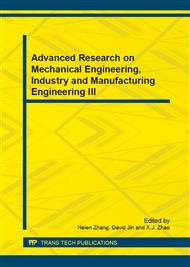p.31
p.36
p.40
p.44
p.48
p.54
p.58
p.64
p.68
The Simulation Research on Air Drag Reduction of Tail Dome on Vans
Abstract:
In this paper, three different types of tail domes were designed based on the mechanism of reducing pressure drag between the front and rear of vans, and it takes the van without a dome as a comparison to discuss the drag reduction effects of three different sizes. The three-dimensional model of the van is established in PRO/E, and the pressure and velocity distribution of the van model were analyzed in Fluent; In addition, the wind resistance test of the van model is proceed in the variable speed motor wind resistance simulation test device. The results of CFD simulation have good consistency with the experimental test results, and it verifies the conclusion that the tail dome is good for drag reduction. It provides basis and reference for the optimization of drag reduction for the vans.
Info:
Periodical:
Pages:
48-53
Citation:
Online since:
August 2013
Authors:
Keywords:
Price:
Сopyright:
© 2013 Trans Tech Publications Ltd. All Rights Reserved
Share:
Citation:


